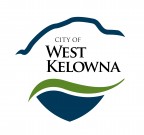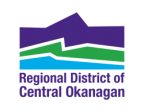Demobilization Well Under Way
Central Okanagan, B.C. – Emergency Operation officials provided an update today on how the response to flooding is switching to a demobilization process.
On the two-month anniversary of the start of the emergency, officials described the magnitude of the response operation and how the demobilization of flood protection measures will proceed.
It took 160 B.C. Wildfire Service crews six weeks to deploy the two million sandbags, five-kilometres of bladder dams and 1.3 kilometres of gabion baskets. It will take at least another month to remove all the sandbags.
Work on demobilization began last week and will proceed in stages as lakes recede from shorelines throughout the Central Okanagan. The interim stage began with removal of sandbags from areas no longer at risk. Bladder dam removals also started last week and will continue in locations that no longer need the protection.
Property owners with sandbag walls can begin to lower them, but should maintain a wall that protects against wind and wave action to a height of 60 centimetres above the current lake level. Okanagan and Kalamalka lakes remain about 47 centimetres above full-pool.
Residents with sandbags that are no longer necessary can take them to the roadside of their property, where work crews will be travelling through neighbourhoods to collect them. Under no circumstances should sandbags be emptied into any creeks, lakes, wetlands, beaches or other natural areas.
The second stage of the removal process will accomplish the full demobilization of all flood protection – a process expected to continue into August. Crews will remove any remaining protective barriers on both private and public land. Neighbourhoods will be notified via Emergency Operations Center communications channels, electronic signboards and the media. Residents are encouraged to sign up for e-updates at cordemergency.ca.
When the level of Okanagan Lake reaches 342.60 metres above sea level, most beaches are expected to reopen, and most docks should be above water again. When the lake returns to its normal full-pool level of 342.48, all beaches will reopen and boating activity can return to normal.
The province is funding the removal of unnatural debris from public land – broken docks, unregistered boats, garbage and barrels – along with large trees or stumps. Removal of these materials will happen first in public beaches, parks.
Small debris on private property is the responsibility of the resident and can be placed in green yard waste bins. Damaged docks and pilings are the responsibility of the property owner.
For residents in areas were the flooding risk has passed, more information about sandbag locations for drop off, details about recovery efforts, and a link to the online Emergency Management BC sandbag recovery application, can be found at www.cordemergency.ca/beprepared/flood-recovery.
Residents and visitors who want to boat on area lakes are encouraged follow the guidelines for respectful boating. They’re encouraged to view the Boating Wake maps at www.cordemergency.ca/map in order to protect against wave generated shoreline erosion. Once lake levels reach more reasonable levels, regular boating activities can resume.
Okanagan Lake dropped 1.5 centimetres over the past 24 hours and is now at 342.949 metres above sea level while Kalamalka Lake decreased 1.5 centimetres and is now at 392.164 metres.
For municipal information such as boat launch, park and beach closures, and water quality advisories, visit their websites:
For beach water quality updates, visit Interior Health’s Water Samples page on www.interiorhealth.ca.
To stay informed about flooding and the recovery efforts, visit www.cordemergency.ca, sign up for e-updates or call the information line at 250-469-8490.







